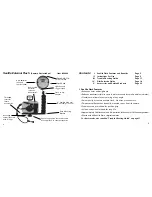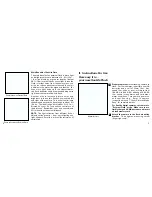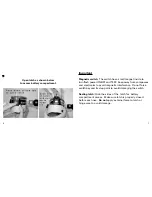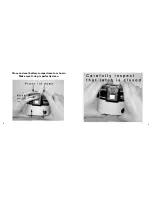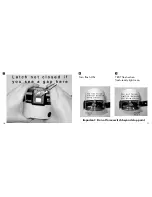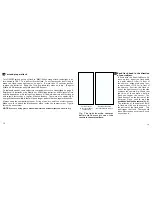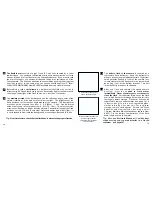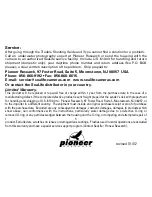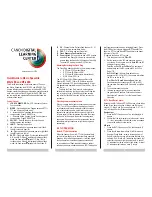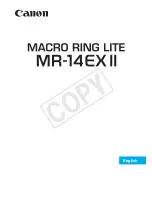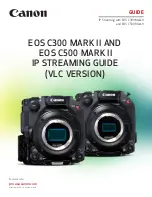
18
e
Check if there is a direct unobstructed path between the
built-in
camera flash and
the sensor at the bottom of the flash head. Adjust flash head position to make sure
the deflected light from the camera’s flash hits the sensor at the bottom of the flash
head. There should be no obstruction in this path (like your hand or glove).
f
Repeat this in a dark place. Direct sunlight can prevent the flash from firing.
g
If flash still does not work, send complete unit, camera and flash to SeaLife
Service Center.
3
Dark areas in your picture
a
Direct the flash head to the center of your object to have an even light coverage.
b
Areas which are further away from the camera appear darker than closer
objects. Measure a distance by stretching out your fin (“Chin to fin” =
approximately 5 ft), or stretch out your hand (approximately 3 ft) to check if
your estimate of distance is correct.
c
The reflection (color) of objects also determines their brightness in the
picture. A bright fish or a white rock may cause a very bright reflection,
while a black coral or dark fish may reflect very little light.
d
4
19
d
The further the flash head is away from the camera lens, the bigger will be
the shadows. The closer it is, the more backscatter you may have from small
particles in the water. If you have absolutely clean water without plankton or
sand, you should move the flash head closer to the camera lens. If you want
to eliminate shadows, you may remove the flash deflector or even use a
second
external
flash.
Flash arm is loose and does not maintain correct aiming position.
a
Soak the arm in warm fresh water and flex arm until all links are clean and
free of detergents or lubricants. Never use detergents when cleaning the
flash arm.
b
Test flash arm flexibility underwater, not above water. Flash arm becomes
stiffer underwater, since flash head is positively buoyant.
IV
.
Film Selection Guide
* Use any 24 to 36 exposure slide or print film.
* We recommend ASA 200 speed film for most applications, but you may find any
film speed will work from 64 to 800.
* Use ASA 50 to 100 speed film for very bright conditions or macro pictures.
* For excellent, professional UW pictures, use 1 or 2 external flashes with the
Macro 3X, 8X or 16X Lenses
and 50-100 ASA speed film.
*Always keep film in a cool place. Avoid exposing film to x-rays in airport
security equipment.
4


